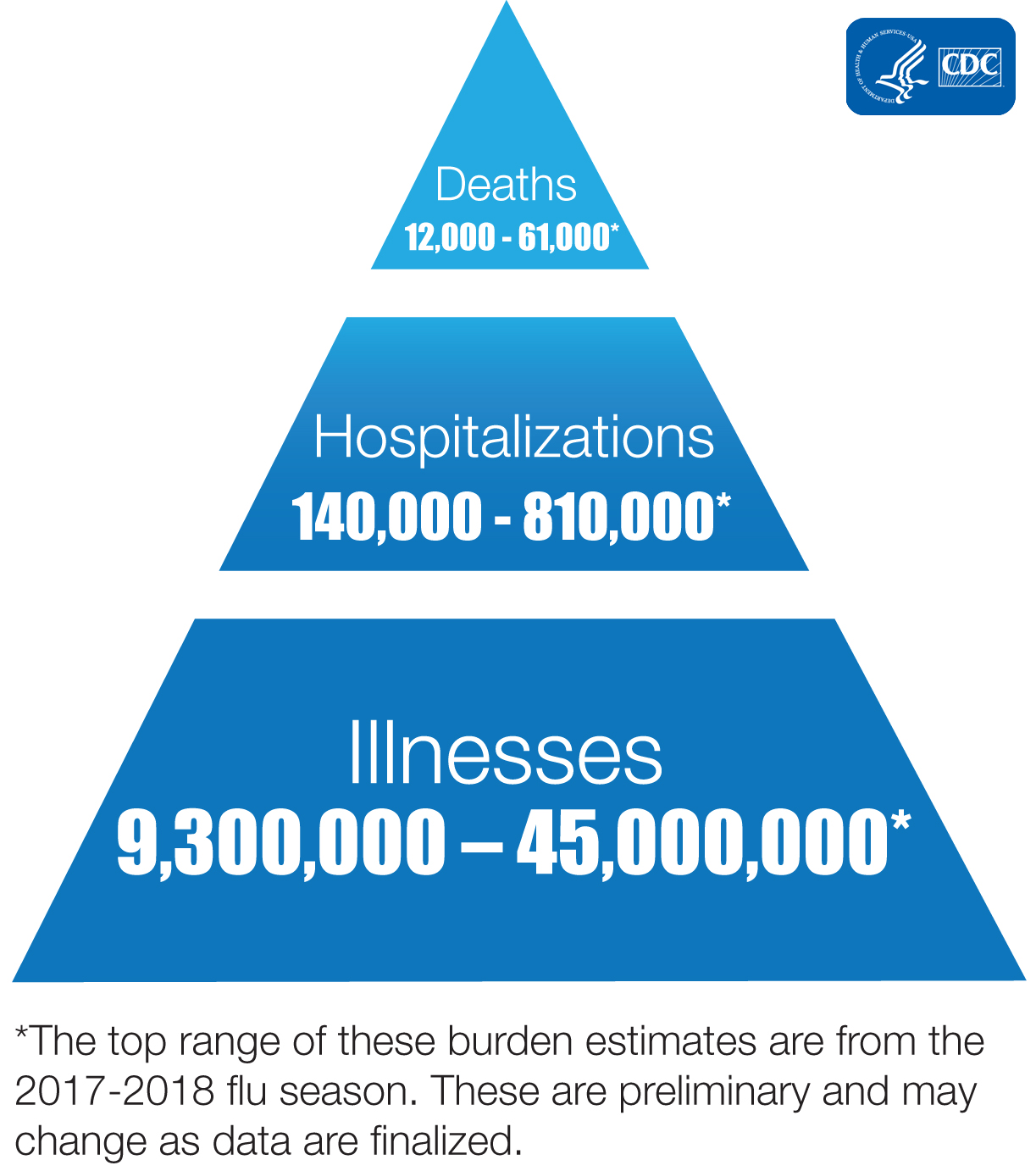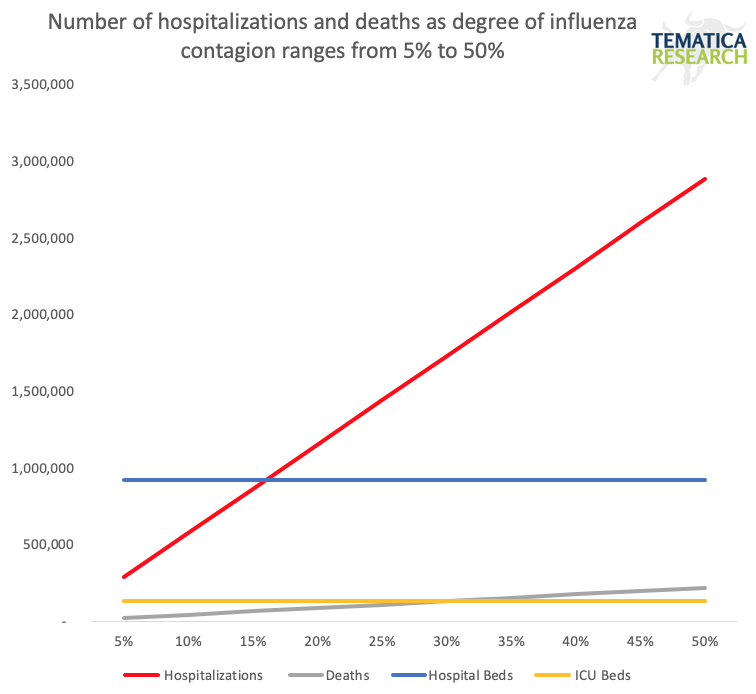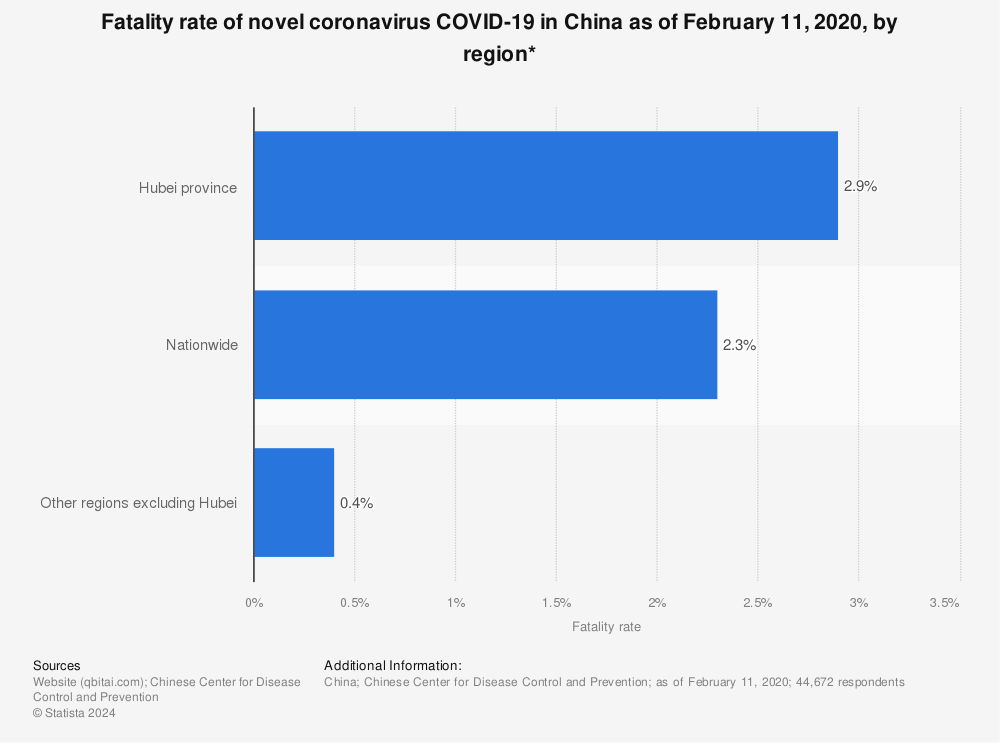Coronavirus: Is It No Major Worry Or A Pandemic? Yes.
The headlines are increasingly dominated by frightening images of people wearing masks or encased in hazmat suits along with words like “pandemic,” not exactly pleasant over morning coffee. We are being told that this virus isn’t all that much worse than the usual flu, yet cities are being quarantined, travel is being restricted or outright banned, and companies are making all kinds of severe contingency plans. How can this be no worse than the usual flu if everyone seems to be having a total meltdown?
I did some simple math to show why this virus could be both:
- (A) something I personally don’t need to get overly worked up over when it comes to my own health, while at the same time
- (B) a major medical threat on a global level.
Sounds like I’ve lost my mind right? Just give me a few minutes and we’ll walk through the numbers.
The breakdown for the impact of the typical influenza virus every season is illustrated in this chart from the Center for Disease Control (CDC). Since 2010 the number infected by an influenza virus every year ranges from 9.3 million to 45 million. The number hospitalized ranges from 140,000 to 810,000 and the number that die from the virus ranges from 12,000 to 61,000.

In the chart below I took the midpoint of each of the ranges shown above. I realize that those ranges are quite large so simply taking the midpoint of the numbers loses some meaning, but bear with me here as we are just looking to understand magnitudes. On average 8.23% of the population of the United States has been infected by the seasonal influenza virus every year since 2010. Of those who have been infected, 1.75% have needed hospitalization and 0.134% have died.

If we assume that the coronavirus is just an average flu bug, then we can use these averages. In the example below I assume that 1.75% of those that contract the virus need hospitalization and 0.134% will die. In the chart below I show how many will need hospitalization and how many will die based on 5% to 50% of the population contracting the virus.
(Please note on the chart below that I took the total number of hospital beds from the 2020 American Hospital Association’s 2020 AHA Hospital Statistics, developed from the 2018 AHA Annual Survey. I estimated the number of ICU beds using data from the Society of Critical Care Medicine which referenced AHA data that found the ration of ICU beds to total beds to be 14.3% in a 2015 study. Surprisingly enough the number of ICU beds is not an easy number to find.)

The problem quickly becomes evident. Under our assumptions, when the percent of the population infected by the virus gets between 15% and 20% of the total population, there simply aren’t enough hospital beds in the country even if every single bed is dedicated to someone with the coronavirus. This is the problem. It isn’t the health risks to any one particular person, but rather the sheer number of people that this virus may be able to infect.
So while the risk to me of needing hospitalization may be no worse with coronavirus that the usual flu, there may be no beds available to treat me if I end up needing one! Now I’m worried.
According to the Center for Disease Control (CDC), on average, about 8% of the US population gets sick from the flu every season, with a range of between 3% and 11% depending on the year. What about the contagiousness of the typical flu? This is from the CDC:
- People with flu are most contagious in the first 3-4 days after their illness begins.
- Some otherwise healthy adults may be able to infect others beginning 1 day before symptoms develop and up to 5 to 7 days after becoming sick.
- Some people, especially young children and people with weakened immune systems might be able to infect others for an even longer time.
Part of why the typical flu is not as contagious as the coronavirus is because you know more quickly when you are sick. The problem with the coronavirus is we are seeing evidence that people can be contagious for more than 14 days and may not have any symptoms. This gives the coronavirus the potential to totally blow away the usual 3% to 11% infection rate during a typical season.
This is why the virus can have the same health risk to any particular person as the usual flu bug while at the same time being an enormous health risk on a city, state and national level. Recall the movie Mission Impossible 2 where our hero Ethan Hunt needs to stop the biological weapon “Chimera” from getting out? Chimera was fatal within 20 hours and those infected quickly experienced severe symptoms. That movie got it all wrong. The most dangerous virus would be one that infects its host and is easily transmitted from one person to the next for years without its host having any symptoms. With such a virus, by the time we even knew of its existence, the majority of the world’s population could already be infected.
As a final note, in the example above we assumed a fatality rate (meaning the percent of those infected that die) of just 0.134%. In China, as of February 11, 2020, according to data compiled by Statista, the fatality rate has been much higher – 21.6x higher in Hubei, 17.2x higher nationwide and 3x higher in other regions excluding Hubei.

Find more statistics at Statista
As of February 27, 2020 at 18:00 Central European time, there were 650 confirmed cases in Italy, 17 deaths and 45 healed. This makes for a mortality rate of 2.6% which is 19.5x more deadly than our example. Current statistics can be found here.
In South Korea, as of the writing of this piece, the total confirmed cases had reached 2,022 with 13 deaths. This makes for a mortality rate of 0.64% which is 4.8x more deadly than our example.
According to LiveScience.com, as of the afternoon of February 28, 2020 there are have about 83,704 confirmed cases and 2,859 deaths. This makes for a mortality rate of 3.4% which is 25.5x more deadly than our example.
On that note, I’m going to go wash my hands… again.
PS – Here is a link I found to a piece on the South China Morning Post that has a regularly updated counter on those affected by COVID.



One thought on “Coronavirus: Is It No Major Worry Or A Pandemic? Yes.”